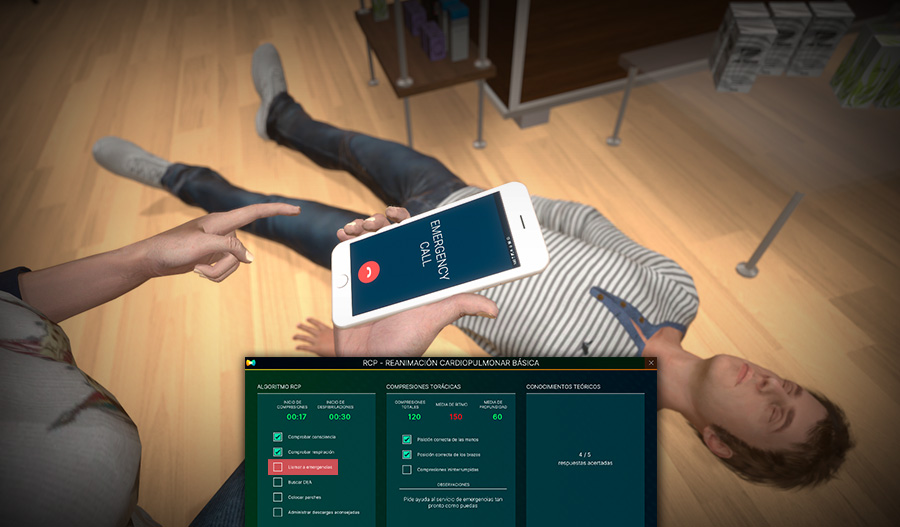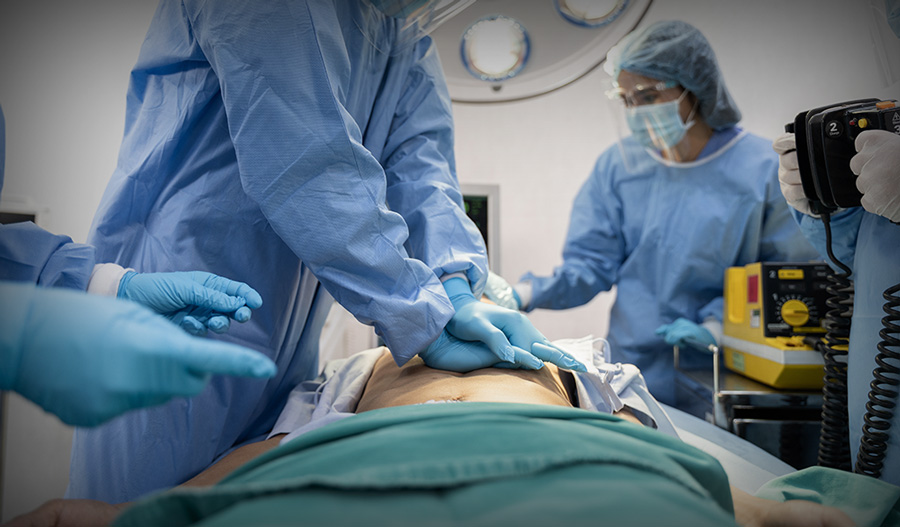CPR rhythm can be difficult to maintain in stressful situations. However, certain songs can help keep the right tempo when performing this life-saving technique. In this article, we list some of the best CPR songs to guide you through this method.
What is CPR and when should you perform it?
Cardiopulmonary Resuscitation (CPR) is a life-saving technique used when someone stops breathing or their heart stops beating. It involves chest compressions, rescue breaths, or both, and can be performed with or without mouth-to-mouth resuscitation.
CPR is a vital link in the chain of survival during cardiac arrest. It can help keep someone alive until more advanced care is available. It's also a key technique for drowning victims.
One of the most critical factors is to act without hesitation. A person whose heart has stopped is clinically dead, and every second counts. This is where CPR songs come into play—helping maintain the steady rhythm required for effective compressions.
Did you know cutting-edge tools like virtual reality help trainees practice the correct rhythm and compression depth? Discover the benefits of these realistic and dynamic VR trainings below:
What are the most common CPR techniques?
There are several CPR methods, but the two most widely used are Compression-Only CPR and Combined CPR.
- Compression-Only CPR is easy to learn and can be performed by anyone. It involves pushing down hard and fast on the chest at a rhythm of 100–120 compressions per minute, ensuring they are deep and effective.
- Combined CPR includes both chest compressions and rescue breaths (30:2 ratio), and it's recommended for individuals trained in full CPR procedures.
As we've highlighted, mastering the rhythm and depth of compressions is essential to keep the heart pumping. To teach and reinforce these parameters, CPR songs are a fun and useful memory tool.
What makes a song suitable for CPR?
A good CPR song needs to have a consistent and memorable beat. One of the most famous CPR songs is “Staying Alive” by the Bee Gees—its tempo perfectly matches the required rate for compressions.
Other qualities of ideal CPR songs include:
100–120 beats per minute (BPM)
This tempo helps maintain the ideal rhythm for chest compressions.
Easy to recall in emergencies
Familiar melodies improve memory recall, increasing the chances of performing CPR correctly in high-pressure situations.
Top 5 CPR songs
Besides Staying Alive, here are some other popular songs with CPR-appropriate rhythms:
1. Staying Alive - Bee Gees
The gold standard for CPR training due to its ideal tempo and recognizability.
2. Dancing Queen - ABBA
Upbeat, catchy, and within the correct BPM range.
3. Sweet Home Alabama - Lynyrd Skynyrd
Steady and clear rhythm, great for beginners.
4. La Macarena
Fun and easy to remember, making it suitable for teaching all ages.
5. Hips Don't Lie - Shakira
High energy and strong beat help keep learners focused and motivated.
CPR courses with Virtual Reality
In CPR training, beyond using music, virtual reality (VR) is an increasingly popular method to enhance learning and retention.
With VR, learners are placed in realistic, high-pressure scenarios where they can safely practice emergency response techniques. This can be particularly useful for people who may freeze or panic in real emergencies.
In VR simulations, trainees experience first-person emergency situations. They gain hands-on experience, feel the urgency, and understand the consequences of mistakes—without any risk.
CPR training with VR is often more cost-effective than traditional methods and can be conducted anywhere with the right equipment (VR headset and simulation software).
Ludus CPR simulation
Ludus is a VR training platform focused on occupational health and safety. Among its 21 immersive simulations is a CPR training module, which allows users to train in customizable settings like airports or shopping malls.
The Ludus CPR simulation provides real-time evaluation of rhythm and compression depth. Trainees can see if their actions meet recommended parameters and use familiar CPR songs to build muscle memory.
With tools like CPR songs and VR-based learning, trainees are better equipped to act quickly and confidently in life-threatening situations—ultimately helping save lives.
Are you interested in Virtual Reality as a tool for health and safety training?
Fill out this form to receive specific information about the benefits and features of our VR platform.








